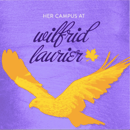One of my favourite ways to unwind on the weekends is to listen to music and watch some movies. This is a stark change from what my favourite weekend activities were when I was little. Every couple of months, my mom used to take me to the Royal Ontario Museum (ROM) or the Art Gallery of Ontario (AGO). I looked forward to walking around and seeing the different paintings and exhibits. Last week, I came across a movie called Jean-Michel Basquiat: The Radiant Child, and it has provoked my interest in visual art all over again.
Jean-Michel Basquiat: The Radiant Child is a documentary about Jean-Michel Basquiat, a Neo-Expressionist painter that was one of the most famed living artists of the 1980s. He is considered to be one of the most significant artists of the 20th century and he holds the record for the most expensive painting sold by an American artist ($110.5 million in 2017). His art often referenced his personal experiences as a person of colour living in New York. He dropped out of the eleventh grade and became a homeless youth, trying to make ends meet while making graffiti art across the city. After getting some recognition from the underground art scene, he started painting for art galleries. By the time he was in his early twenties, his art was selling so well that he was on his way to becoming a millionaire.
One of my personal favourite paintings by Basquiat is Untitled (Devil), 1982 because I love the wide variety of colours and layering on the figures’ faces. I also enjoy Arroz con Pollo. It shows a man serving a steaming hot plate of chicken to a woman sitting down at the table, fork in hand, ready to eat. One of my favourite elements of his work is his anatomical references. After looking online, I found several beautiful paintings and drawings of skulls, different bones in the body and figures. Basquiat also makes use of words in his work as well. He crosses some of the words out to draw more attention to them.
It was fascinating to watch Basquiat’s quick process of painting and drawing that he made look so natural and easy. In the documentary, there are clips of him flipping through books and magazines, looking for inspiration. One of the highlights of the documentary is Basquiat taking a break to dance to jazz music while painting.
This documentary has refreshed my interest in visual art and has made me realize that I should make more of an effort to explore other mediums of art, instead of just music and film. One of these weekends, I’m hoping to make a trip down to the AGO. It’ll be a good break from my Spotify playlist and Netflix account.


